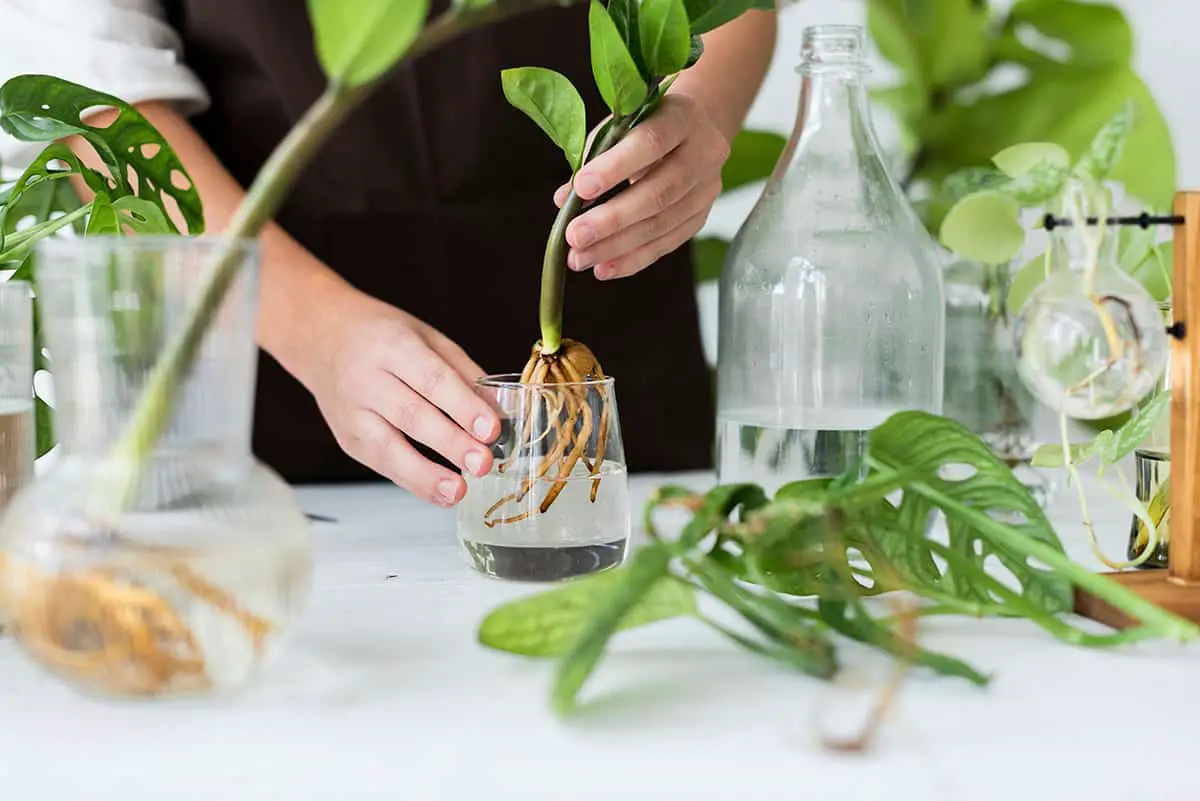Propagating houseplants is an affordable and simple way to increase the number of plants in your home. By creating new plants through both sexual and asexual means, you can experience the joy of plant parenthood without breaking the bank. Many houseplants are easy to propagate, allowing even beginners to expand their indoor garden with minimal effort.
In this article, you’ll find easy-to-propagate houseplants that require basic care and grow quickly from cuttings.
Table of Contents
- Pothos (Epipremnum Aureum)
- Spider Plant (Chlorophytum Comosum)
- Jade Plant (Crassula Ovata)
- African Violets (Saintpaulia)
- Snake Plant (Sansevieria)
- ZZ Plant (Zamioculcas Zamiifolia)
- Philodendron
- Aloe Vera
- Rubber Plant (Ficus Elastica)
- Peace Lily (Spathiphyllum)
- String Of Pearls (Senecio Rowleyanus)
- Swiss Cheese Plant (Monstera Deliciosa)
Pothos (Epipremnum Aureum)
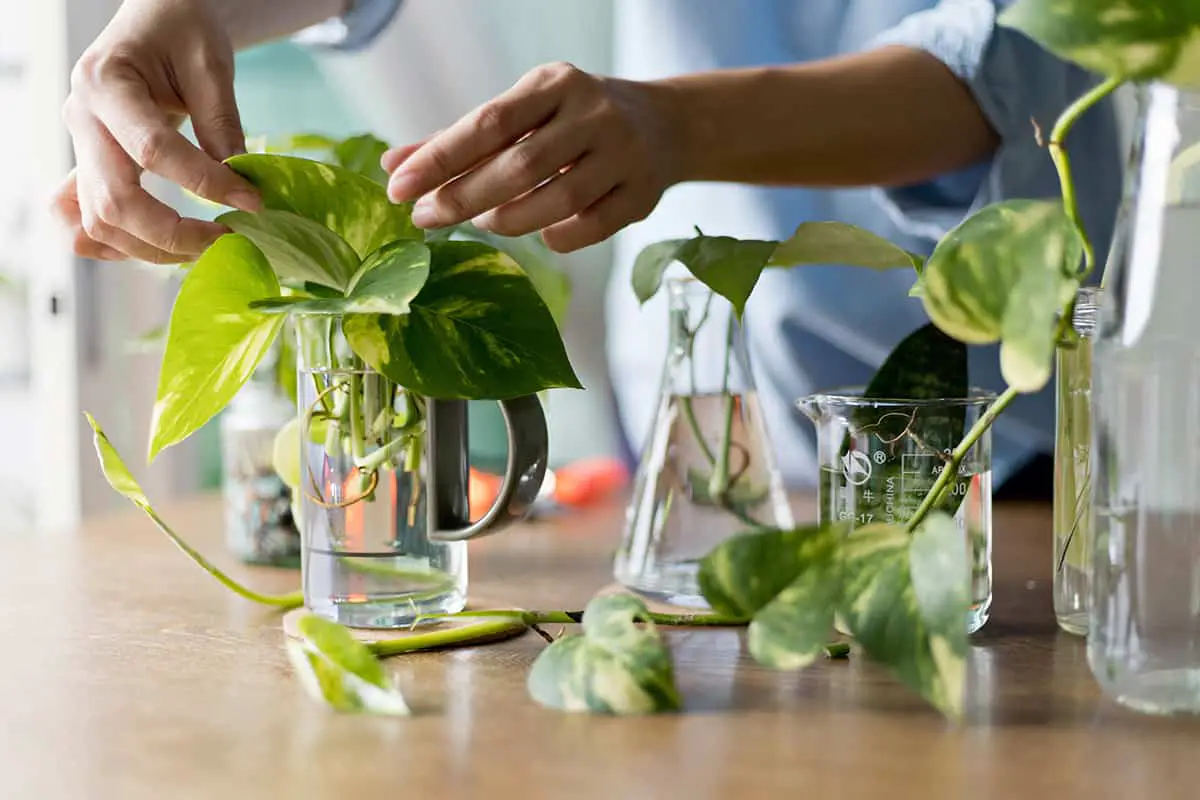
Pothos, also known as Epipremnum aureum, is a common houseplant that has earned a reputation for its hardiness. Originating from the Solomon Islands, this tropical climbing vine is a popular choice for beginners looking to propagate their own plants.
To begin, you should understand the ideal conditions for pothos propagation. The plant thrives in low light and can tolerate occasional neglect, which makes it an attractive option for novice gardeners. This hardy plant doesn’t demand much, which is why it’s often found in offices and homes alike.
One simple method for propagating pothos involves cutting stems with healthy leaves. Carefully cut a 4-6 inch stem, ideally with at least four leaves, and trim the bottom-most leaf off. Then, place the cutting in a glass of water with the cut end submerged. After a few weeks, you should notice roots starting to grow.
Once the roots are well-developed, you can transplant your pothos cutting into a pot with well-draining soil. Be sure to choose a pot with drainage holes to prevent root rot.
Spider Plant (Chlorophytum Comosum)
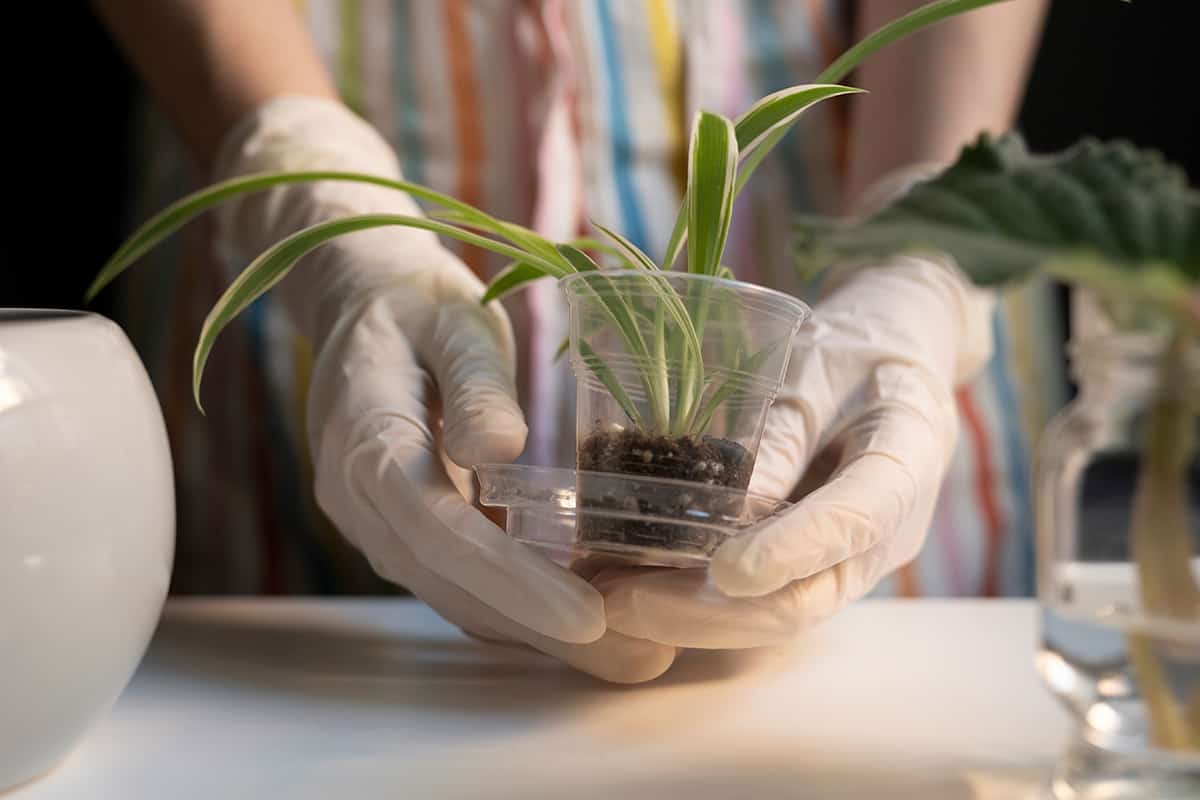
The Spider Plant is remarkably easy to grow and propagate, thriving in nearly any type of condition. This plant gets its common name from the small plantlets produced on long trailing stems, resembling spiders.
With its attractive foliage, Spider Plants come in various color patterns, including solid green, green edges with a white stripe, and white edges with a green stripe. They not only beautify your living space but are also tolerant of neglect and can adapt to different lighting conditions.
To propagate the Spider Plant, you can simply remove the plantlets and place them in water or soil. Within a short period, they will produce roots and can be transferred to a pot. Ensure that your young plants receive adequate light and moisture to support their healthy growth.
Jade Plant (Crassula Ovata)
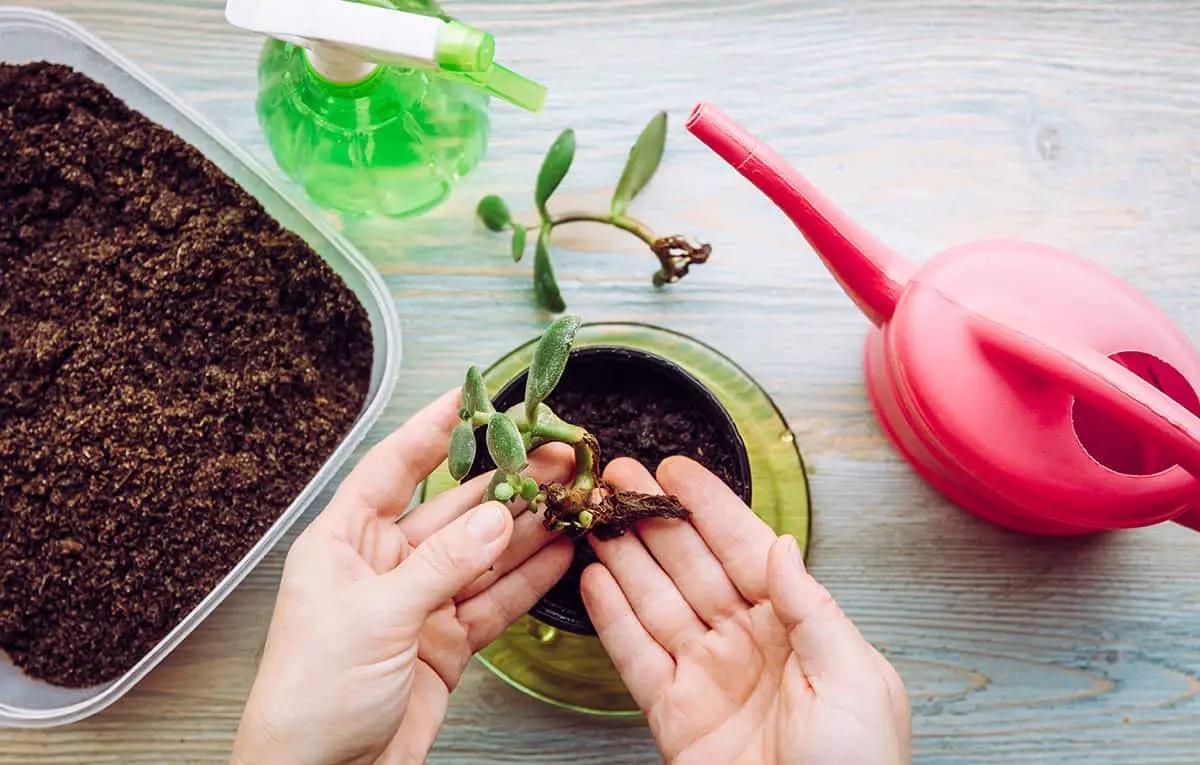
The Jade Plant is an easy-to-grow houseplant that thrives with minimal care. It’s commonly known as the friendship plant, money plant, or silver dollar plant.
To propagate a Jade Plant, you simply need to take a leaf or stem cutting. Before planting the cutting, let it dry for a day or two. This helps prevent rot while it establishes its roots. Once the cutting has dried, plant it in well-draining soil, ensuring that it receives indirect sunlight.
Jade Plants prefer moderate watering. It’s essential to let the soil dry out between waterings, as overwatering can lead to root rot. Pay attention to your plant’s leaves; if they appear to be shriveling or dropping, it might be time to water.
African Violets (Saintpaulia)
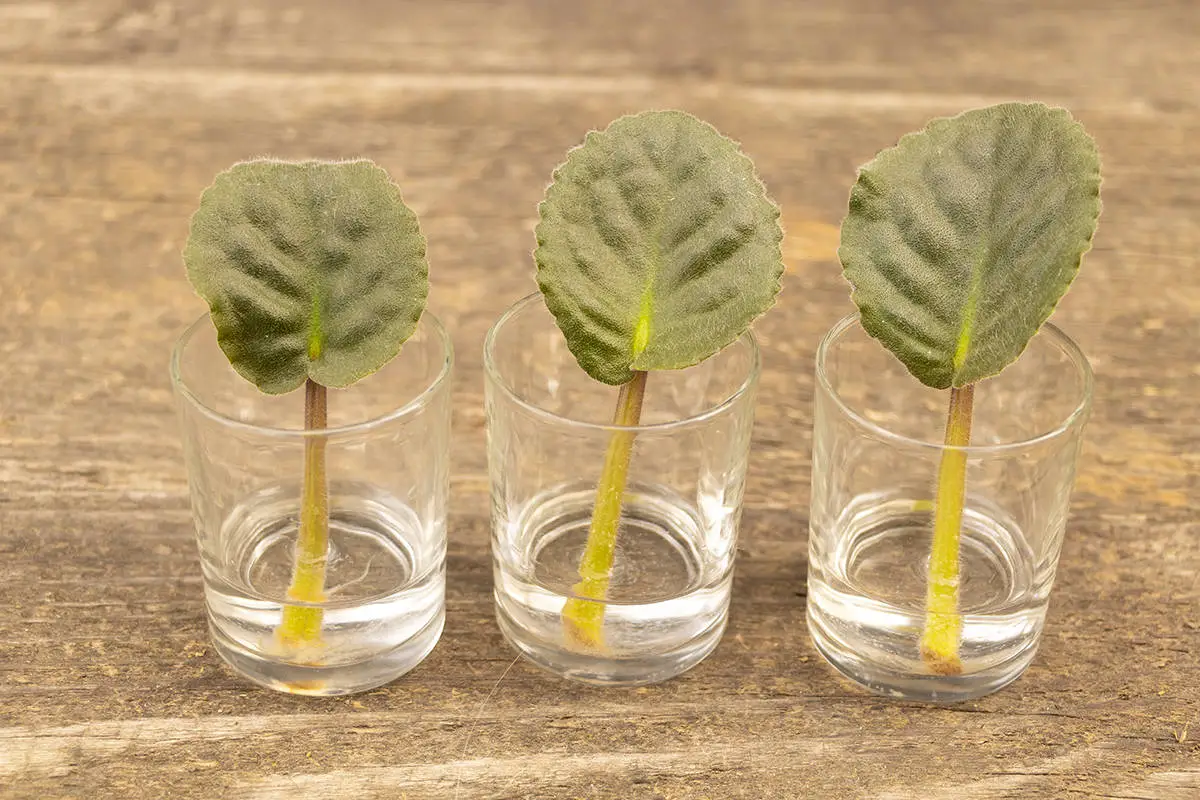
African Violets (Saintpaulia ionantha) are low maintenance, easy to grow houseplants that can reliably bloom several times a year when cared for properly. These popular plants, native to Eastern Africa, belong to the Gesneriaceae family, alongside gloxinia and primrose.
African violets can be easily propagated by leaf cutting. To start, select a healthy leaf from an established plant along with its petiole (the stalk connecting the leaf to the stem).
Place the leaf-cutting diagonally in the prepared potting mixture and lightly water it. Ensure the cutting gets indirect bright light and maintains consistent moisture. In a few weeks, you should see new plantlets emerging from the base of the leaf-cutting.
When it comes to light, African violets prefer a north, northwest, or northeast-facing window. You should place the plant about three feet away from a south-facing window. However, if the ideal lighting situation is difficult to achieve, you can supplement with fluorescent lights. Temperature plays a crucial role, too; African violets thrive between 60° and 80°F, which happens to be the same range that we enjoy.
Snake Plant (Sansevieria)
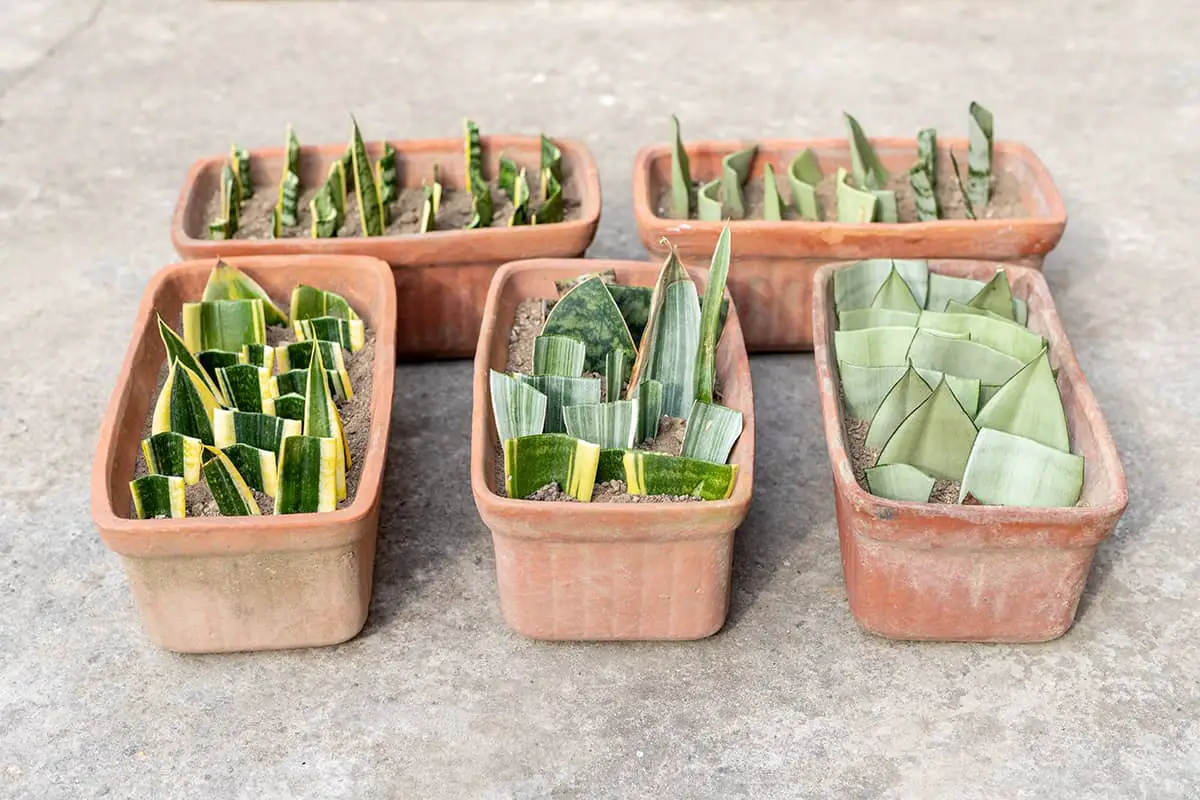
The snake plant, also known as Sansevieria, belongs to the Dracaena genus, which includes other popular houseplants like the Madagascar dragon tree, corn plant, and lucky bamboo.
You’ll appreciate its forgiving nature and striking appearance. This hardy houseplant has long, tongue-shaped leaves with alternating light and dark bands, often edged in white. Snake plants are native to tropical western Africa where they can flower and produce berries, although this rarely occurs for indoor plants. Cultivars of Dracaena trifasciata range in size, with some dwarf varieties growing only 6-7 inches tall and others reaching heights of 2-4 feet.
One of the easiest ways to propagate snake plants is by using leaf section cuttings. To do this, remove a leaf and cut it into 3-to 4-inch-tall sections. Make sure you know which end is the bottom and which is the top. Dip the bottom end of each section in a rooting hormone, then plant it in moist potting soil.
In about four weeks, you should see roots starting to form. Ensure the potting soil is kept consistently moist during this period, but not waterlogged. Once the roots have developed, you can treat your new snake plant like a mature plant with regular watering and moderate light exposure.
ZZ Plant (Zamioculcas Zamiifolia)
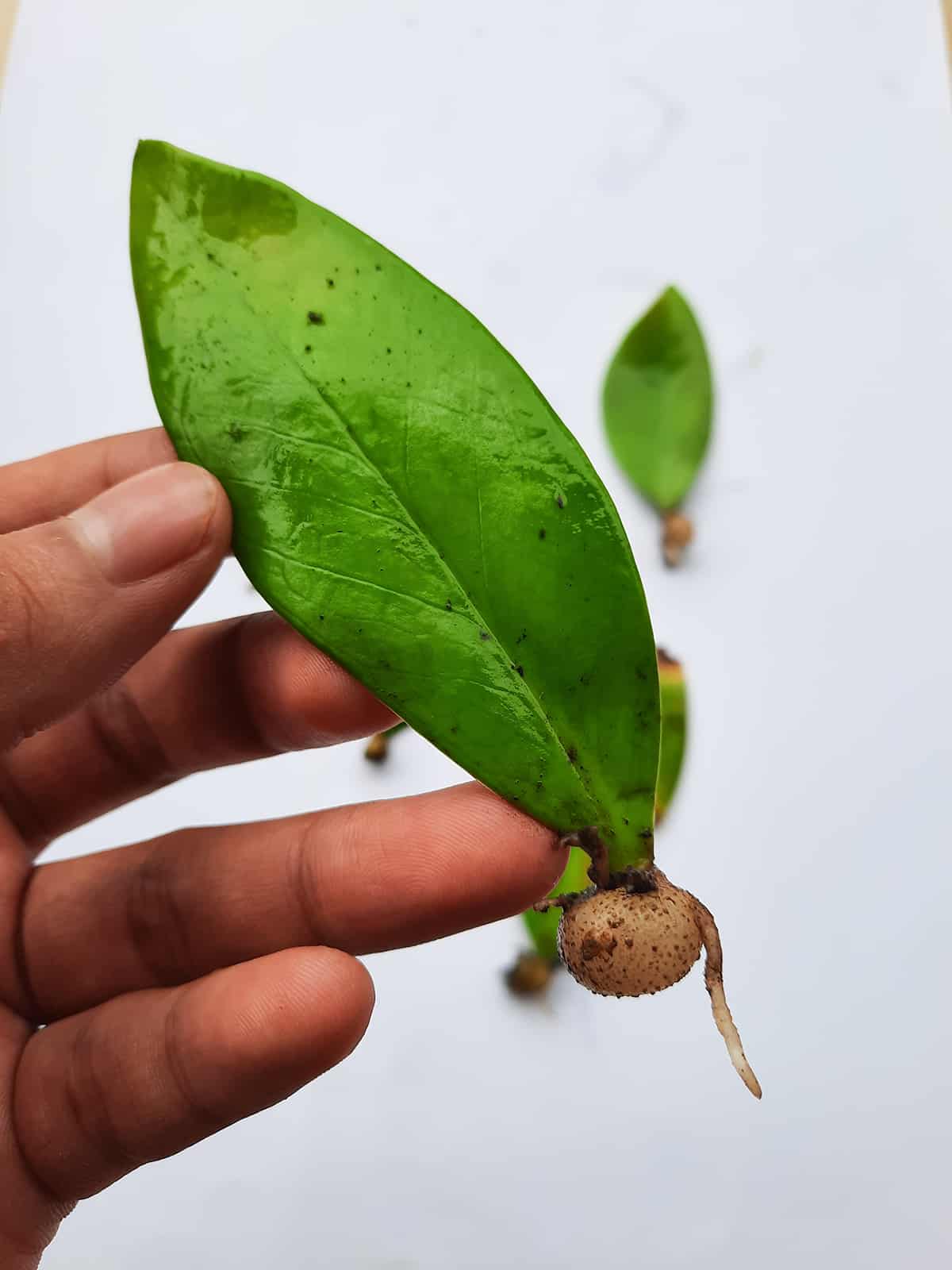
When looking for easy-to-propagate houseplants, you should consider the ZZ Plant. This hardy, evergreen plant is beloved for its glossy, green leaflets and low maintenance requirements. As an aroid, it has a unique appearance and is adaptable to various growing conditions.
Propagation of the ZZ Plant is a straightforward process. You can utilize leaf cuttings, stem cuttings, or division of the plant’s rhizomes.
To start with leaf cuttings, simply remove a healthy leaf from the plant, let it dry for a day, and then insert the leaf’s bottom edge into a well-draining potting mix. Keep the soil slightly moist, and soon you will see small roots and new leaflets sprouting from the cutting.
Moreover, stem cuttings provide another option for propagating the ZZ Plant. Snip off a healthy stem section, let it dry for a day or two, and then plant it in a pot with well-draining soil. Maintain the humidity around the cutting by covering it with a plastic bag or a glass dome, and keep the soil barely moist.
Finally, through rhizome division, your ZZ Plant can also thrive. Gently remove the plant from its pot, revealing its thick, water-storing rhizomes. Locate a healthy, chunky rhizome, and carefully separate it from the main plant, avoiding damage to the roots. Replant the rhizome in a new container with well-draining soil.
Philodendron

One of the best houseplants for easy propagation is the heart-leaf philodendron. These plants have a versatile and simple growing process that works well for both novices and experienced gardeners. In this section, you’ll find key points about propagating heart-leaf philodendron.
To begin propagation, you’ll need to start with healthy stem cuttings. Aim for cuttings of approximately 4 to 6 inches in length. Remove any leaves from the lower part of the cutting, ensuring that at least one to two nodes are exposed. This helps promote better root growth.
Once the cuttings are prepared, place them in clean potting media. Ensure that the container has proper drainage to prevent root rot.
Keep the cuttings in a warm, humid environment with bright, indirect light. Consider using a plastic dome or bag to maintain high humidity levels around the cutting. It’s important to monitor the moisture levels of the potting media, moistening it as needed. Most philodendron cuttings take three to six weeks to develop roots.
Once you see new growth, indicating that the cutting has rooted successfully, transfer it to a new pot with fresh potting soil. Be gentle while transplanting to avoid damaging the delicate new roots. After transplanting, continue to care for your new heart-leaf philodendron by providing adequate light, water, and humidity.
Aloe Vera

Aloe Vera is an easy-to-grow houseplant known for its medicinal properties.
To propagate, simply detach the offsets, or “pups,” and plant them in fresh soil. Healthy Aloe Vera plants produce multiple offsets during their growth. Gently pull them from the parent plant and place them in their new pots.
Aloe Vera thrives in a bright and sunny environment. Find a south facing windowsill or an unobstructed east or west facing window. Bright natural light ensures healthy growth.
While Aloe Vera is drought-resistant, you must water it properly. Avoid overwatering! Let the soil dry out between watering sessions to prevent root rot. A well-drained soil mix is essential for your Aloe Vera plant.
Rubber Plant (Ficus Elastica)
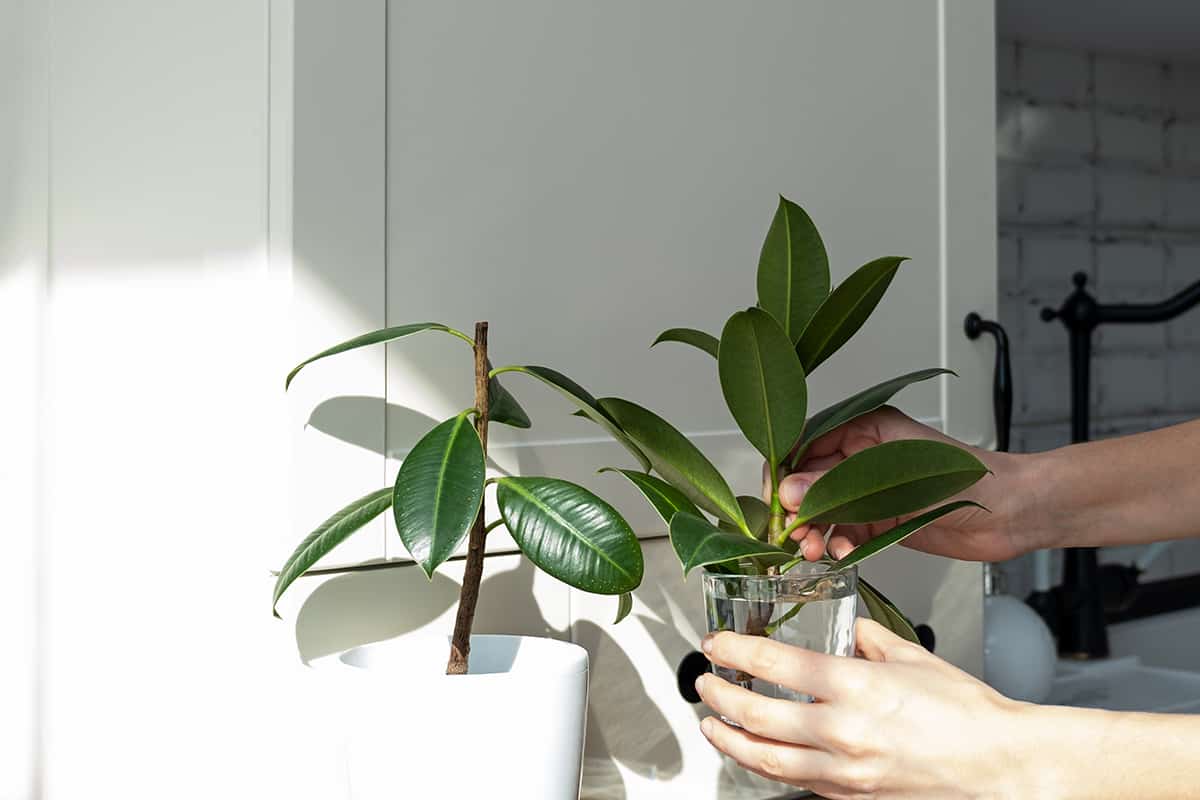
Rubber plants, also known as Ficus elastica, are a popular choice for indoor gardening as they are easy to propagate and make a stunning addition to your home. They can grow up to 6 to 10 feet tall under ideal conditions. With just a little effort, you can fill your space with beautiful rubber trees that thrive indoors.
To propagate a rubber plant, air layering is a common method, especially for taller, leggy plants. Pick a point on a stem about 12 to 18 inches from the shoot tip. After removing any leaves in the area, cut around the stem with a sharp knife, going all the way to the woody center.
Once you have made the cut, wrap the wounded area with wet sphagnum moss. After that, cover the moss with plastic wrap to retain moisture. It typically takes 4 to 8 weeks for roots to develop. After you see the developing roots, cut the air-layered section below the roots and repot the new plant into a container with well-draining soil.
Peace Lily (Spathiphyllum)
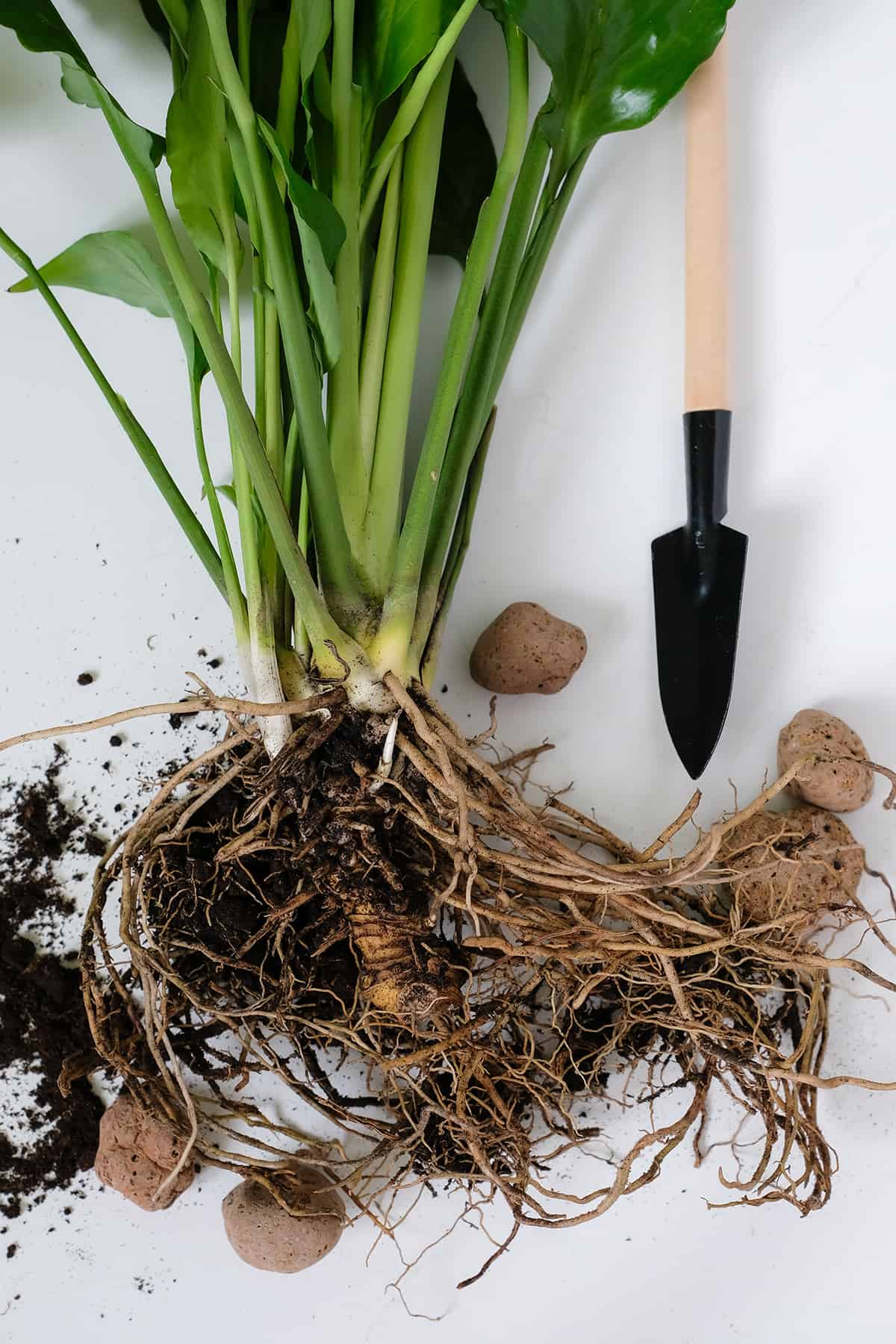
The peace lily (Spathiphyllum) thrives well in indoor conditions, making it ideal for beginners. Its attractive dark green leaves and showy white flowers create an elegant display in your living space. Propagating a peace lily is simple, as it only requires division to multiply.
To propagate your peace lily, you’ll need to choose a healthy plant with well-established root system. Carefully remove the lily from its pot and gently separate the roots to divide them. Make sure each division has abundant roots and foliage to ensure successful propagation.
Once you have your divisions, place them into new pots filled with potting mix designed for houseplants. Keep your newly potted peace lilies in a well-lit area, but protect them from direct sunlight.
Peace lilies enjoy moderate watering, so make sure to keep the soil evenly moist. These plants can even tolerate lower light levels, so they will adapt well in your home.
String Of Pearls (Senecio Rowleyanus)

As a houseplant enthusiast, you’ll love propagating the string of pearls. This unique, succulent vine (Senecio Rowleyanus) is known for its trailing pea-shaped leaves. It’s perfect for hanging baskets and adds texture to your indoor garden.
One reason you’ll find the string of pearls easy to propagate is its simple process. Just take 3-4 inch stem tip cuttings, remove 3-4 leaves from the bottom, and place them into a moist potting mix. Make sure to cover the last few bottom nodes lightly. Soon, roots develop at each node, and your new plant begins to grow.
To care for your string of pearls, give them a spot with light shade exposure. These plants prefer a warm and dry environment. Remember to mist the soil surface while the roots establish themselves, as overwatering can harm them.
Swiss Cheese Plant (Monstera Deliciosa)
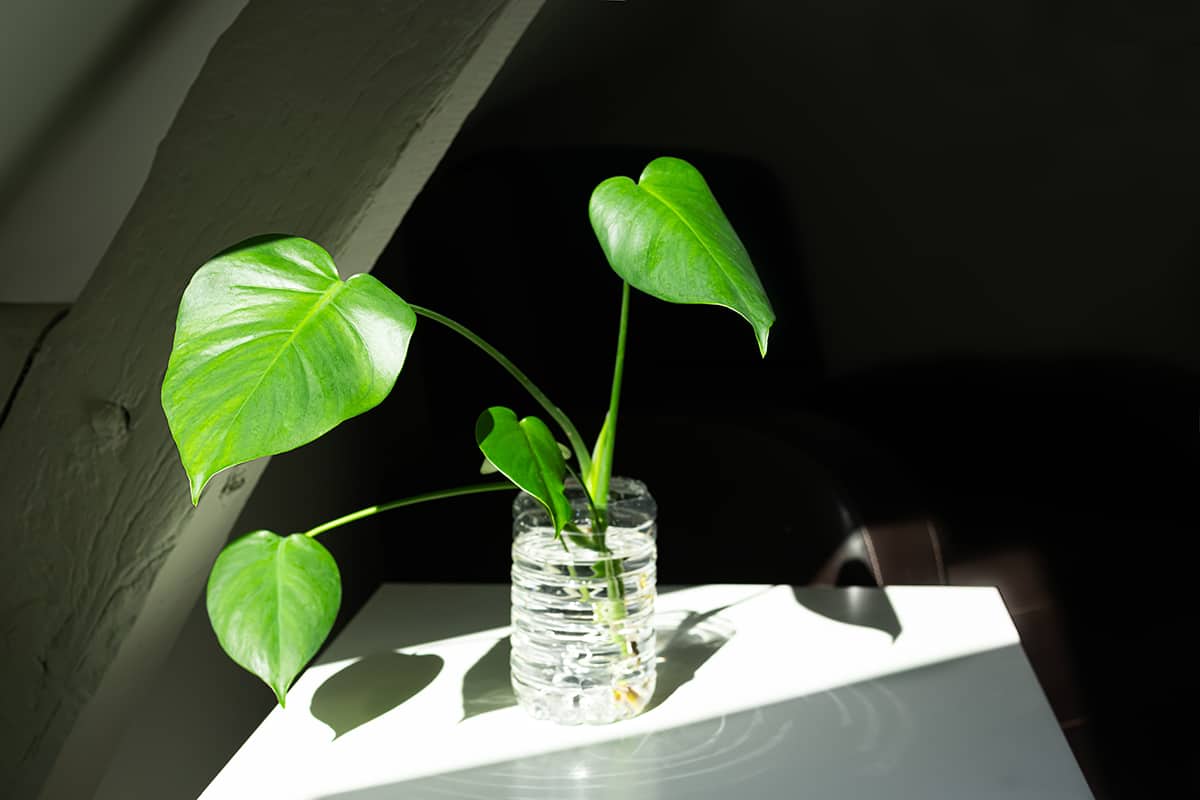
The Swiss Cheese Plant, or Monstera Deliciosa, gets its name from the unusual holes in its large, tropical foliage.
To propagate the Monstera Deliciosa, you can use stem cuttings. First, prepare the cutting by selecting a healthy stem with at least 2-3 leaves and a visible aerial root. Next, make a clean cut just below the aerial root. Then, place the cutting in water and allow the root to grow in a warm environment with bright, indirect light. In about 3 to 6 weeks, the cutting will develop roots and can be transferred into soil.
Apart from its striking appearance, Monstera Deliciosa has another delightful feature: it produces an edible fruit called Mexican breadfruit. However, make sure to only consume the fruit when it’s ripe, as it can be toxic in its early stages. This versatile plant will not only brighten your living space but also provide you with a unique conversation starter.
